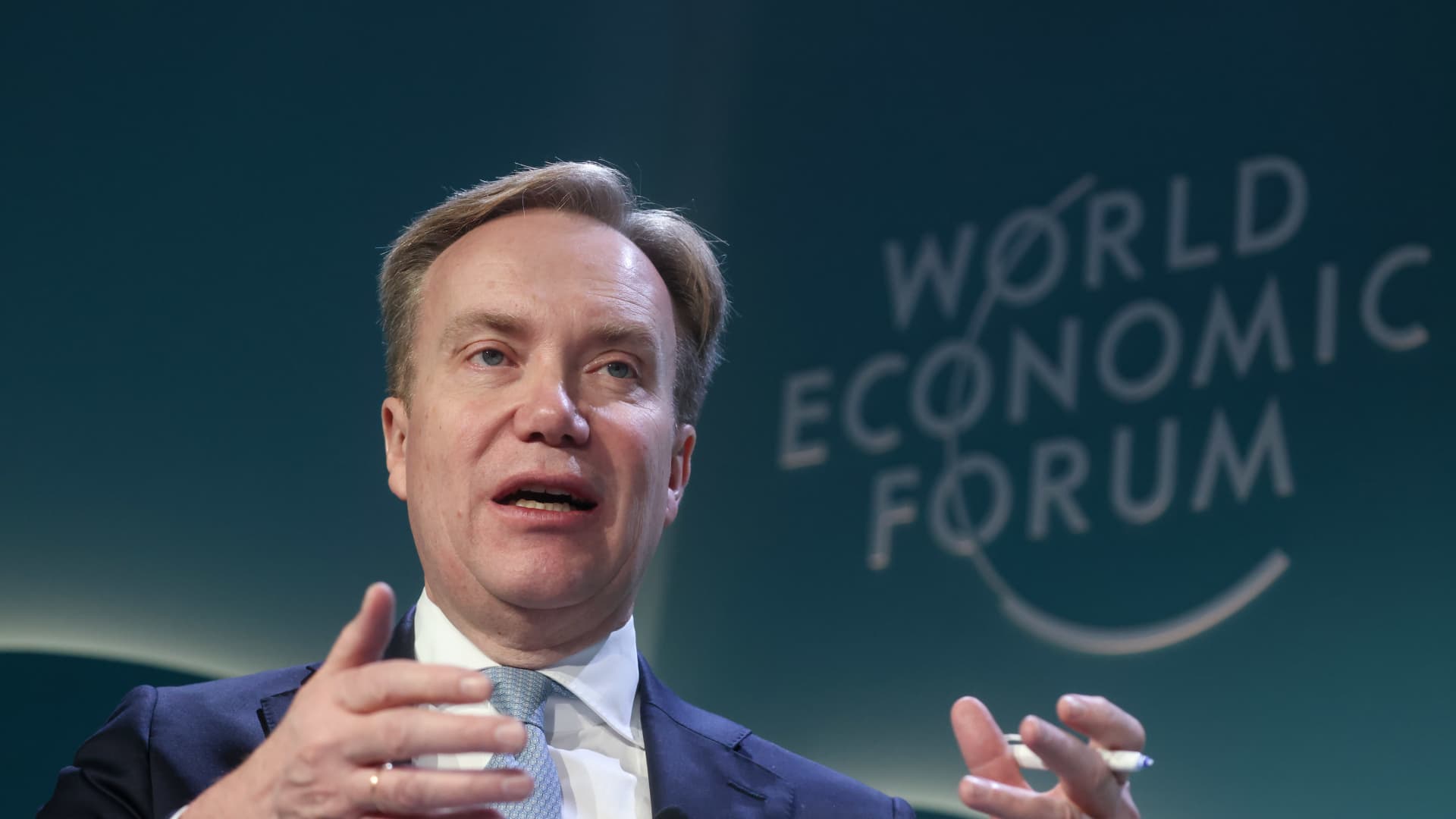Guests at sidewalk tables at Janis Bar in Cais do Sodre in Lisbon, Portugal.
Horacio Villalobos | Corbis news | Getty Images
Headline inflation in the euro zone fell slightly in January, flash figures released by the European Union statistics agency on Thursday showed, while core numbers fell less than expected.
The overall annual price increase was 2.8%, in line with a forecast by economists polled by Reuters. Inflation was 2.9% in December, compared to 2.4% in November, largely due to the removal of energy price support measures.
Core inflation fell to 3.3% in January from 3.4% in December. A Reuters forecast suggested a decline to 3.2% last month.
By sector, service sector inflation – an important indicator for policymakers due to its link to domestic wage pressures – remained steady at 4%. The disinflationary effects of the energy market continued to decline, from -6.7% to -6.3%.
Economic growth in the bloc is stagnating.
Preliminary figures released earlier this week showed that inflation in Germany fell slightly more than forecast, reaching 3.1%. The euro zone’s largest economy has become one of its biggest drags on growth as German GDP contracted 0.3% in the fourth quarter.
European Central Bank officials are monitoring a variety of data to see if and when they can begin cutting interest rates from their current record highs. Price increases have moderated significantly from a peak of 10.6% in October 2022, and the central bank’s 2% target is coming into view.
As markets continue to price in cuts from April, some policymakers have pushed back with suggestions that declines are more likely to occur in the summer or even later. The ECB emphasizes that it remains dependent on data.
At last week’s monetary policy meeting, when interest rates remained unchanged, ECB President Christine Lagarde said the “disinflation process” was underway despite the December rise.
Kamil Kovar, senior economist at Moody’s Analytics, said the numbers were “mixed.”
“The decline to 2.8% was welcome news, especially compared to the ECB forecasts, which were for an increase in the inflation rate. But it was due to a negative surprise in the energy sector, which is all the more shocking given the end of government interventions,” Kovar said in emailed comments.
“However, core inflation fell only slightly, with the services sector in particular turning out quite hot. While some of this hot data is explained by regular annual reassessments and a change in weights, it still makes a March rate cut a pipe dream and leads to hikes.” [the] Bar for a cut in April. A cut in June remains our baseline forecast.”
Source link
2024-02-01 11:51:54
www.cnbc.com










